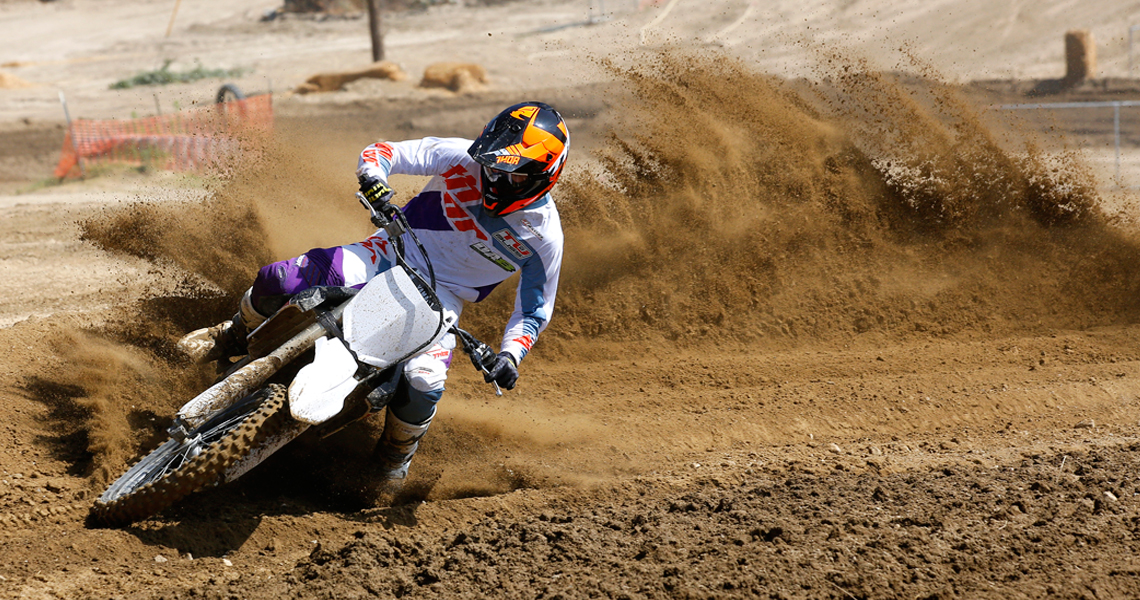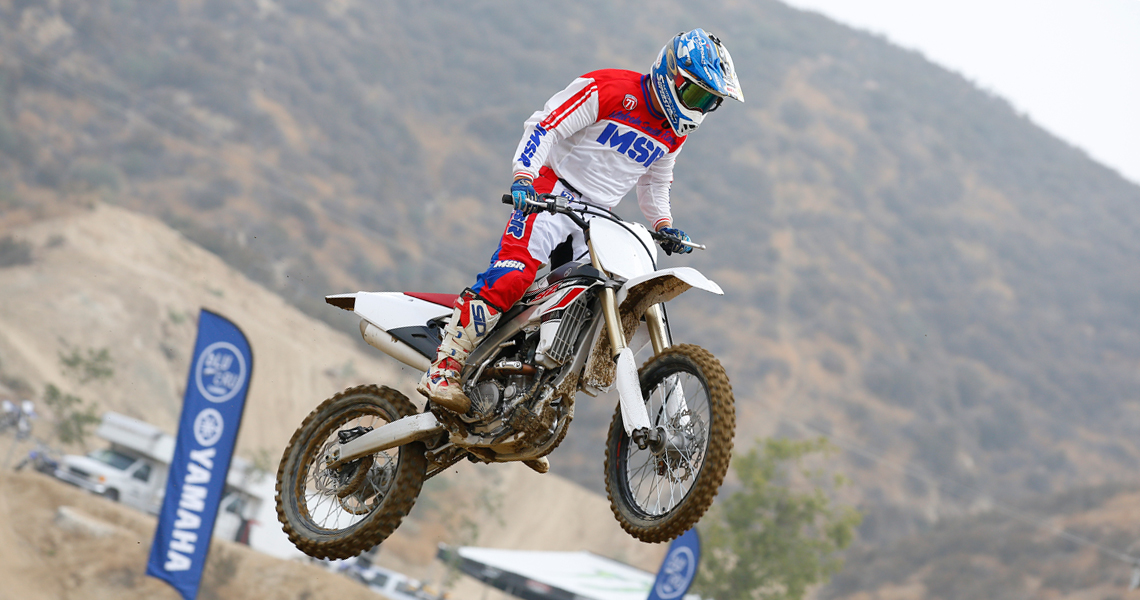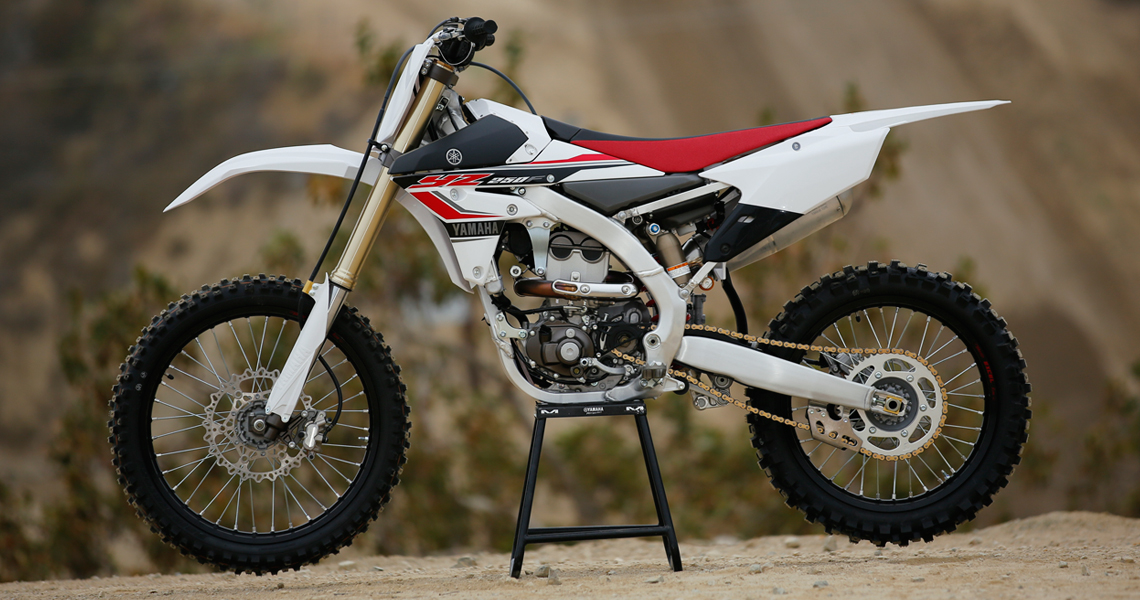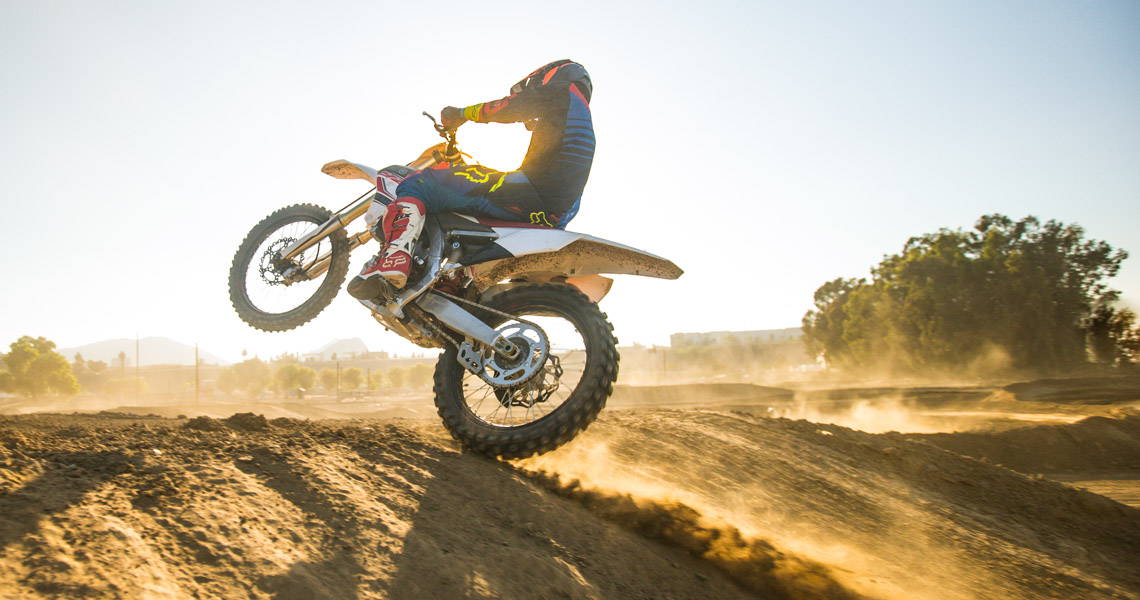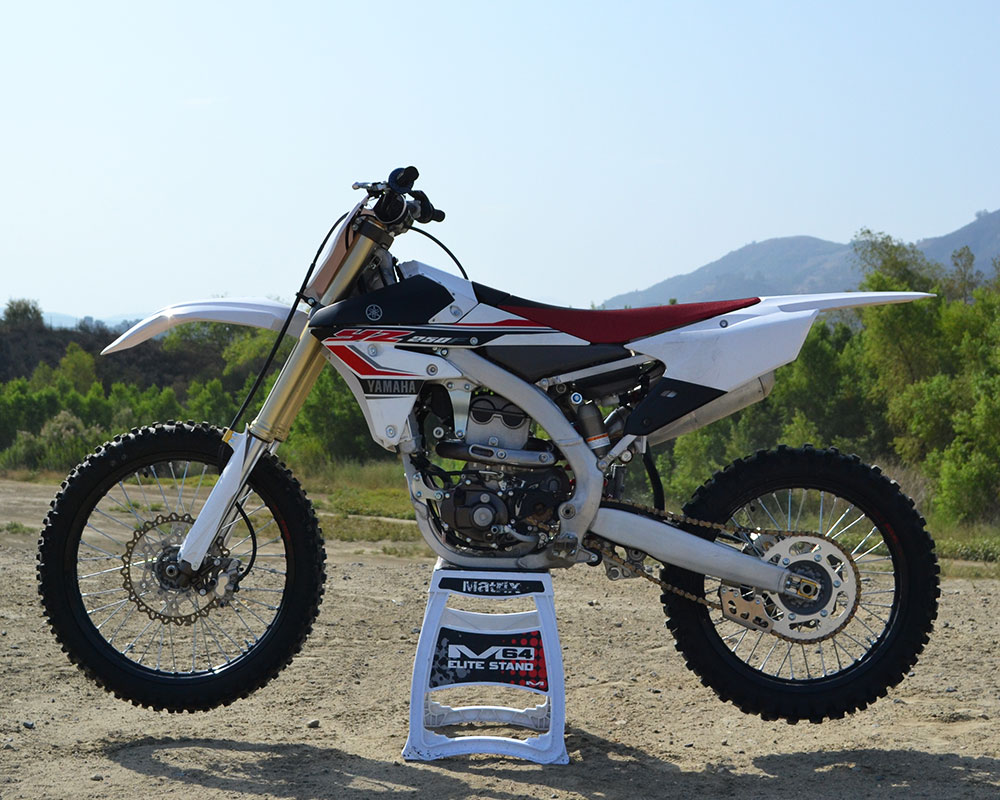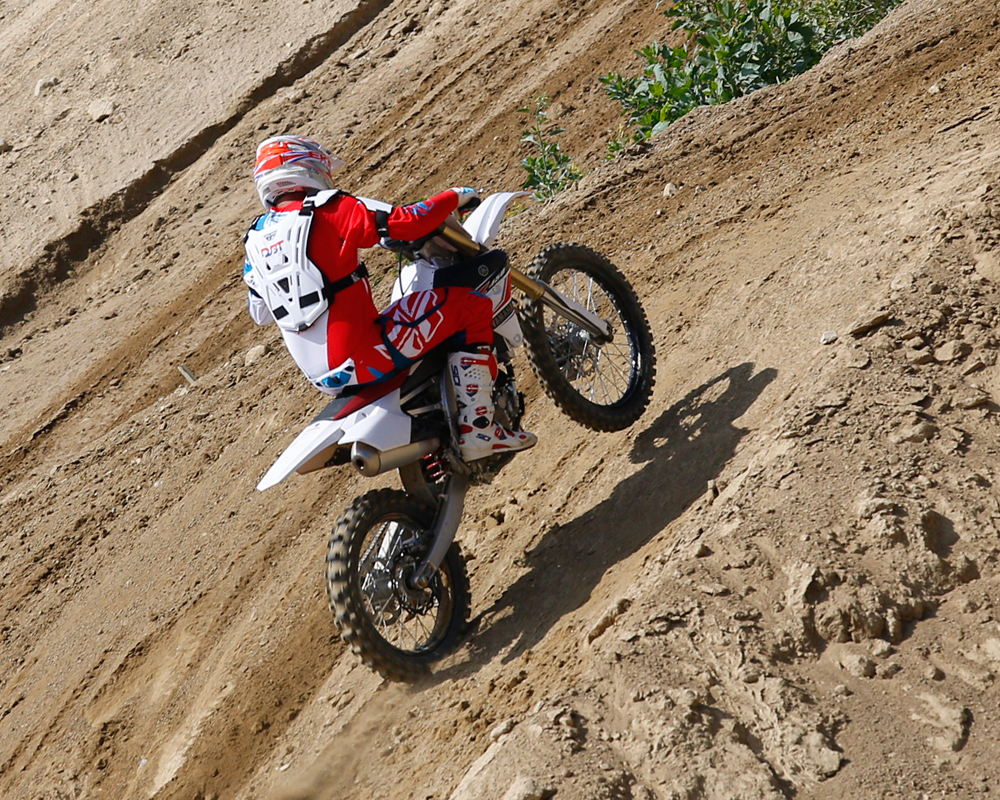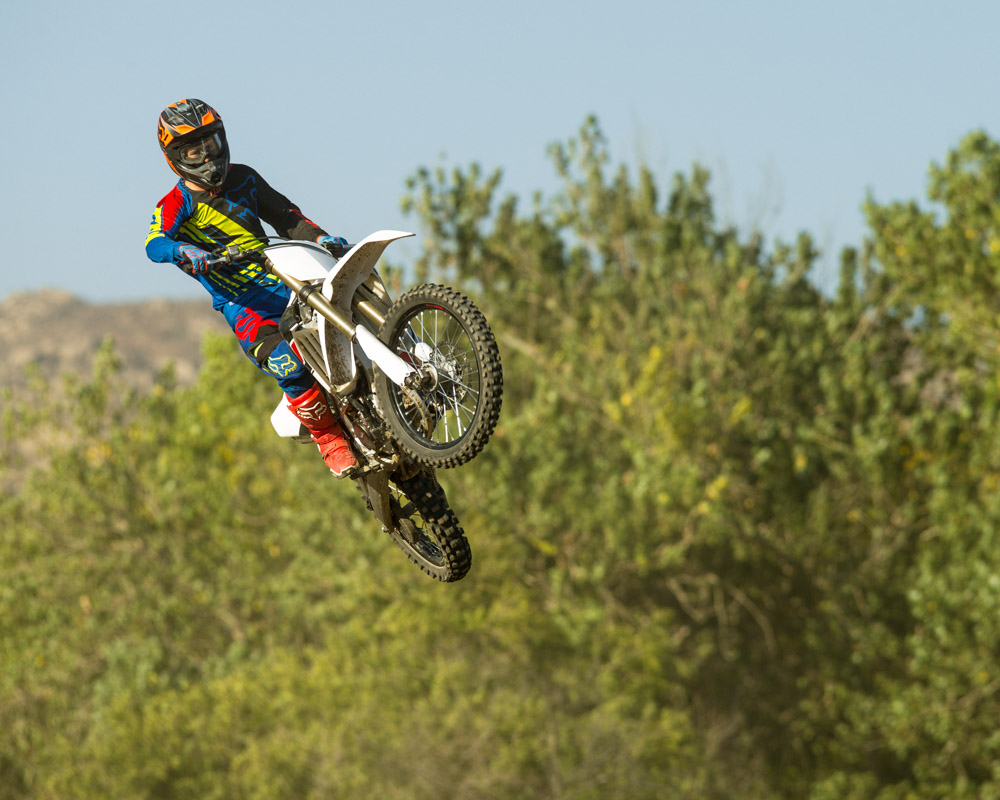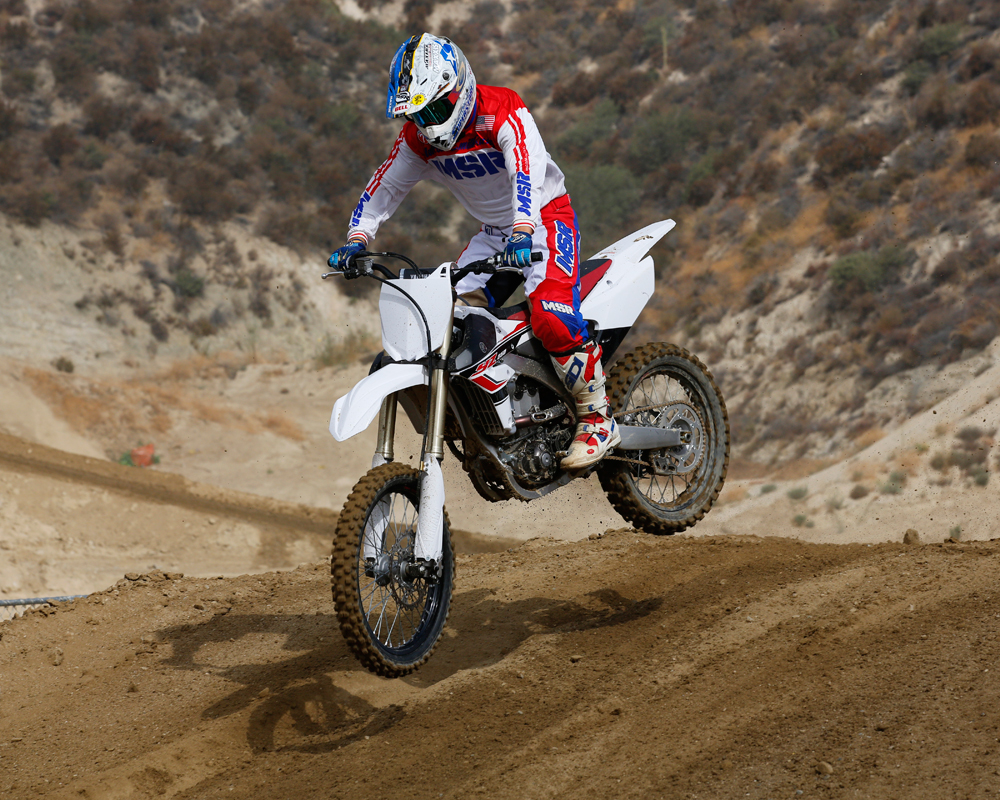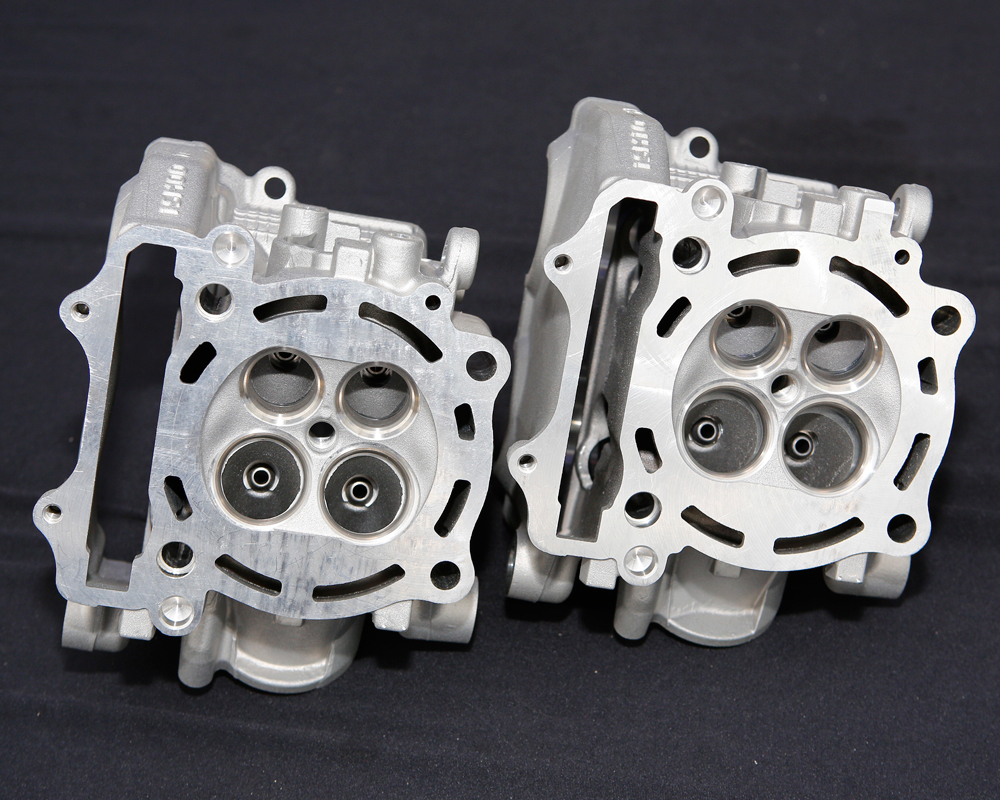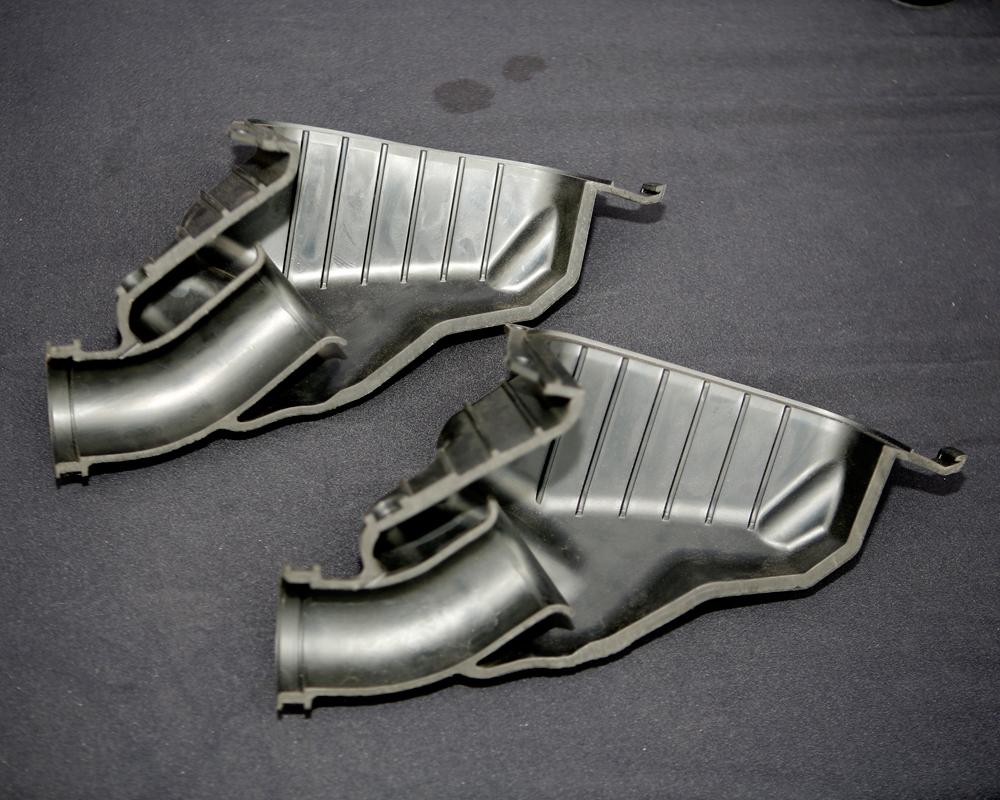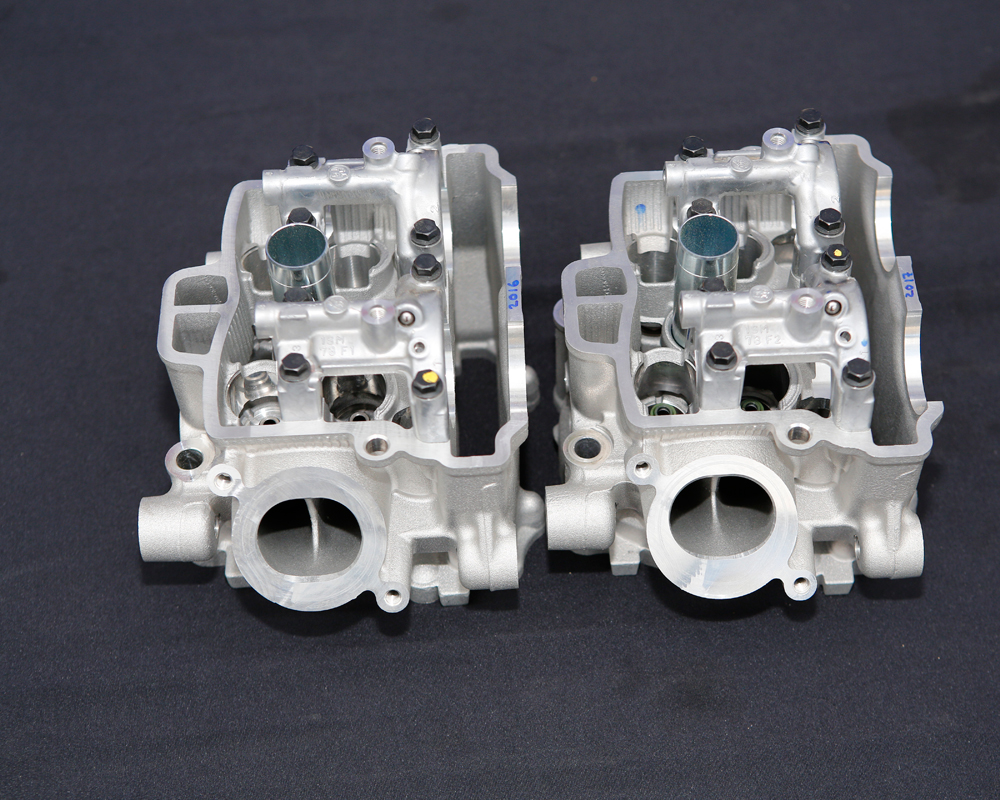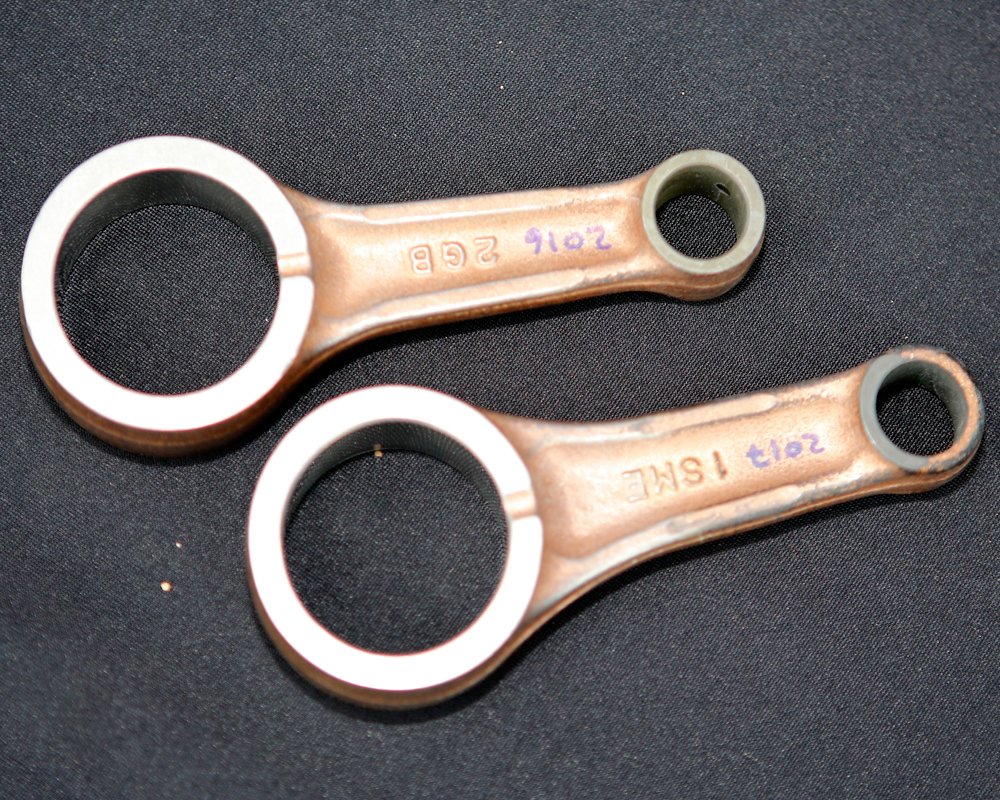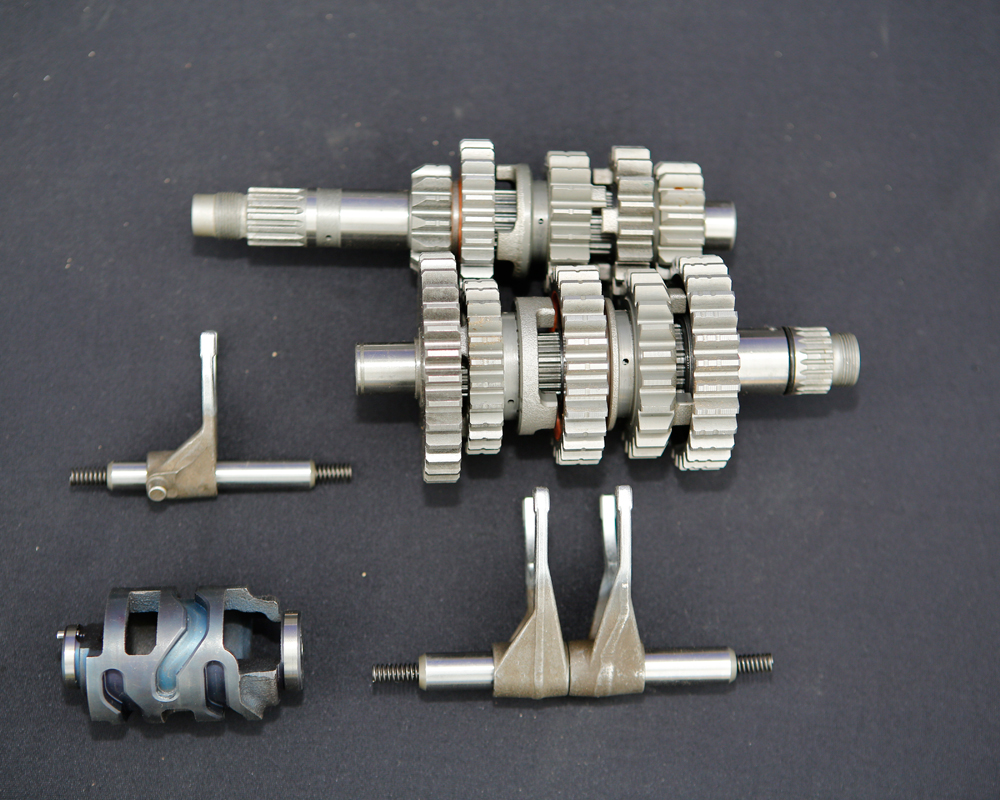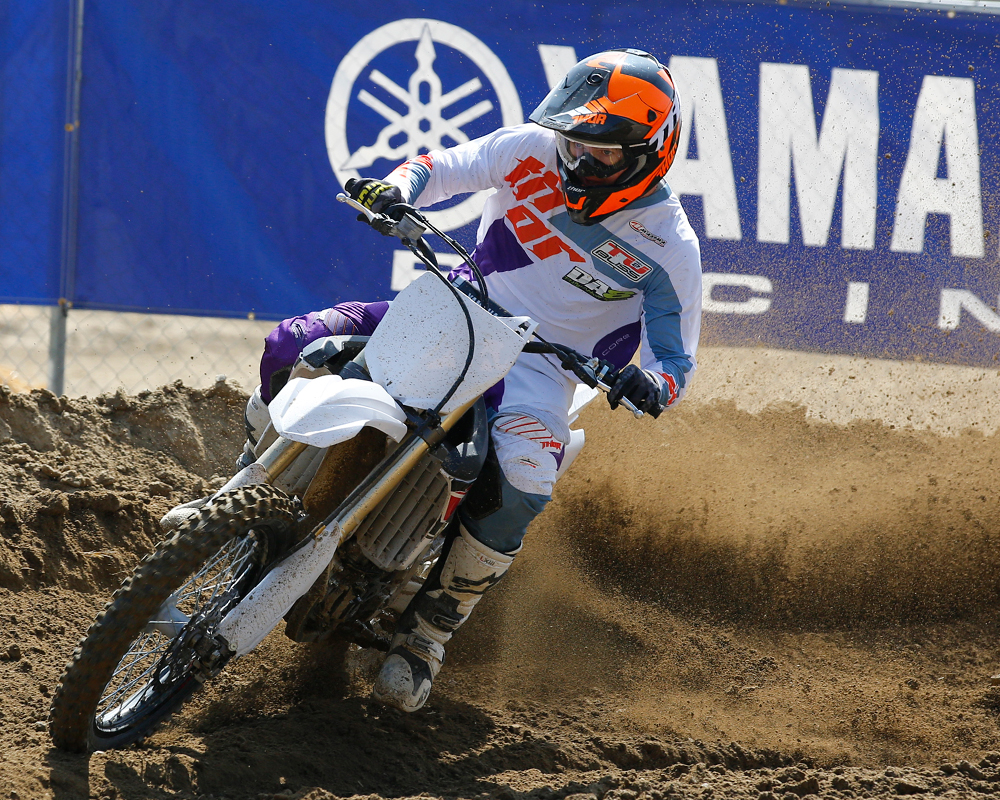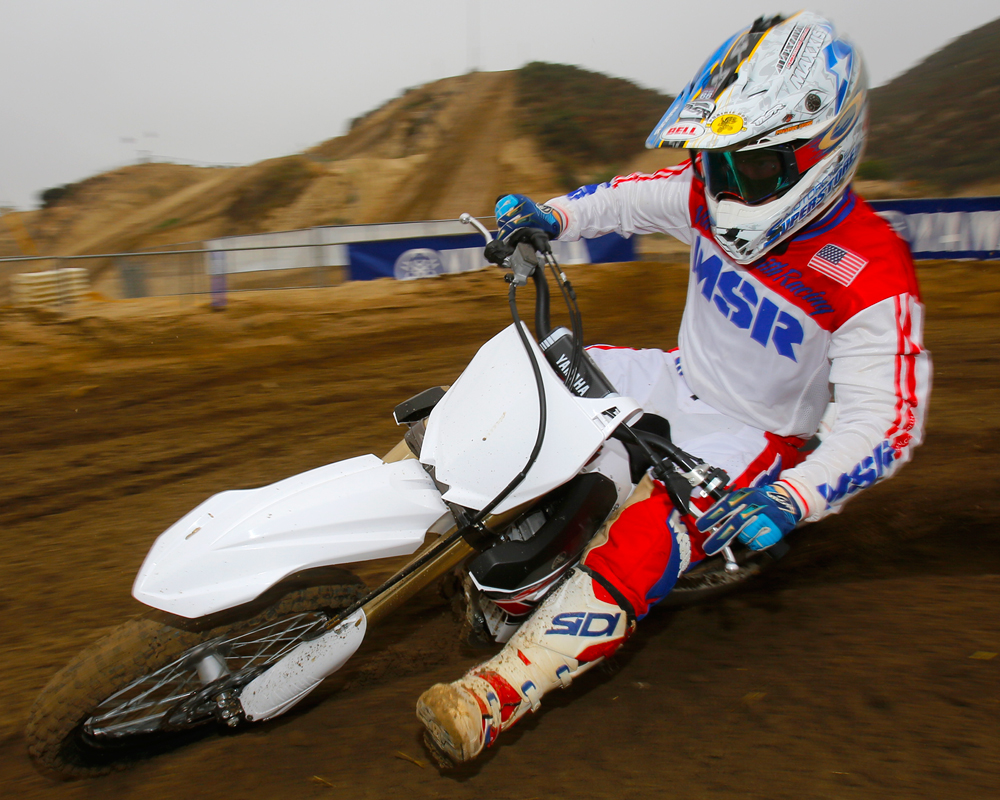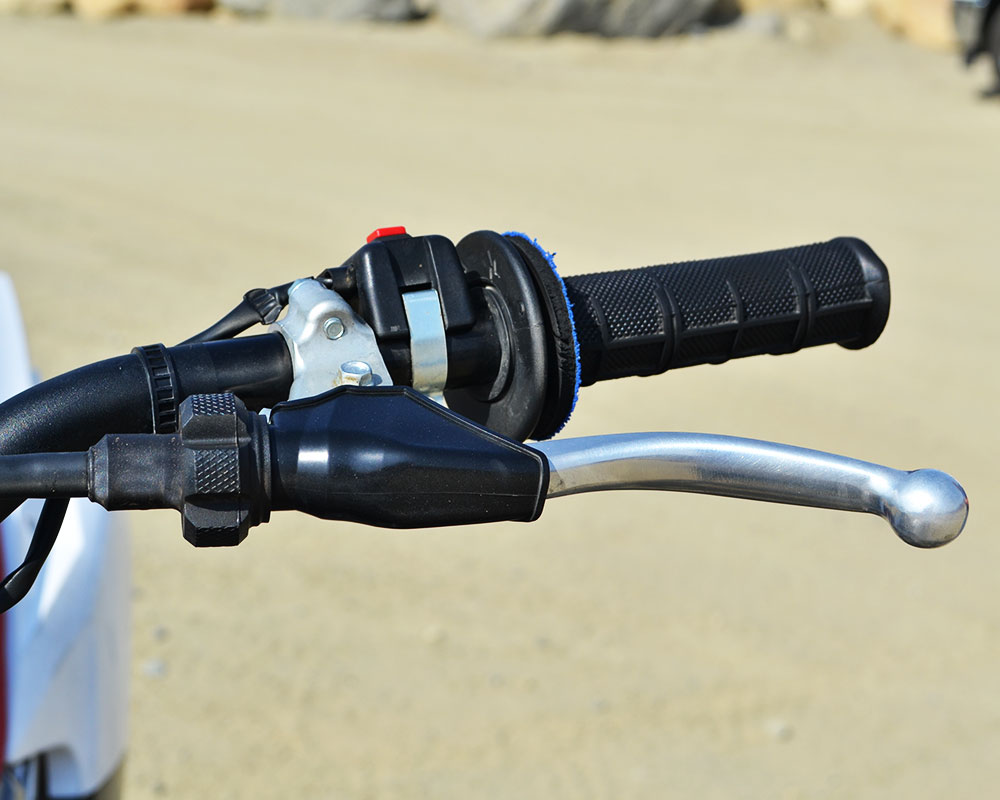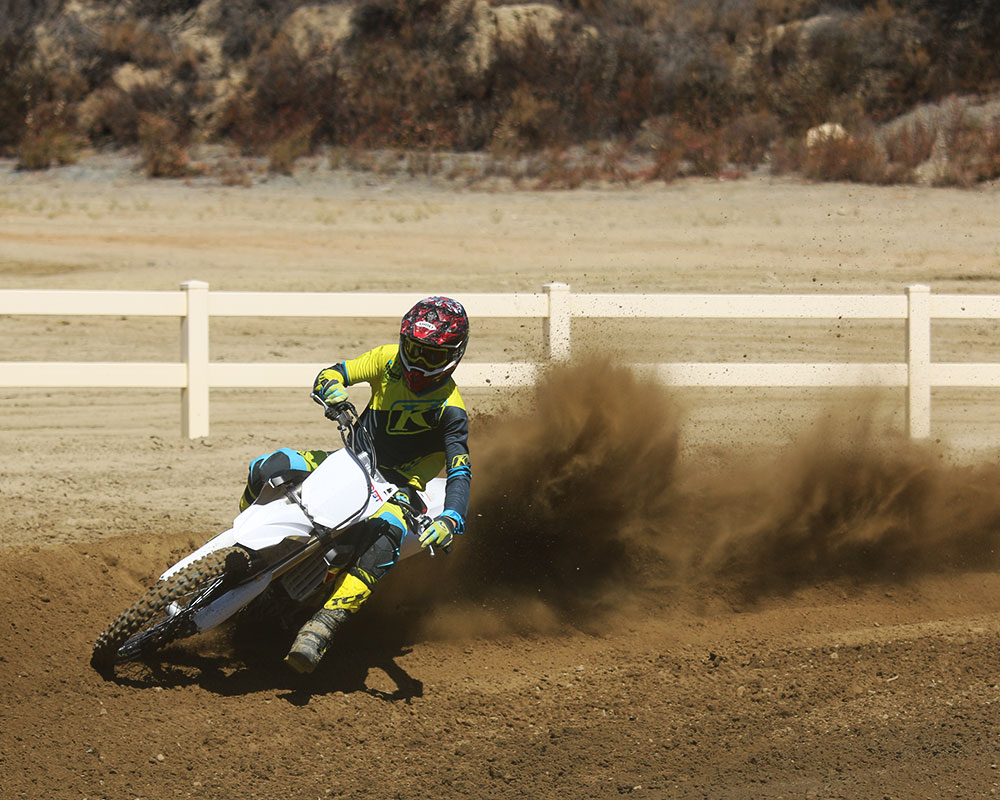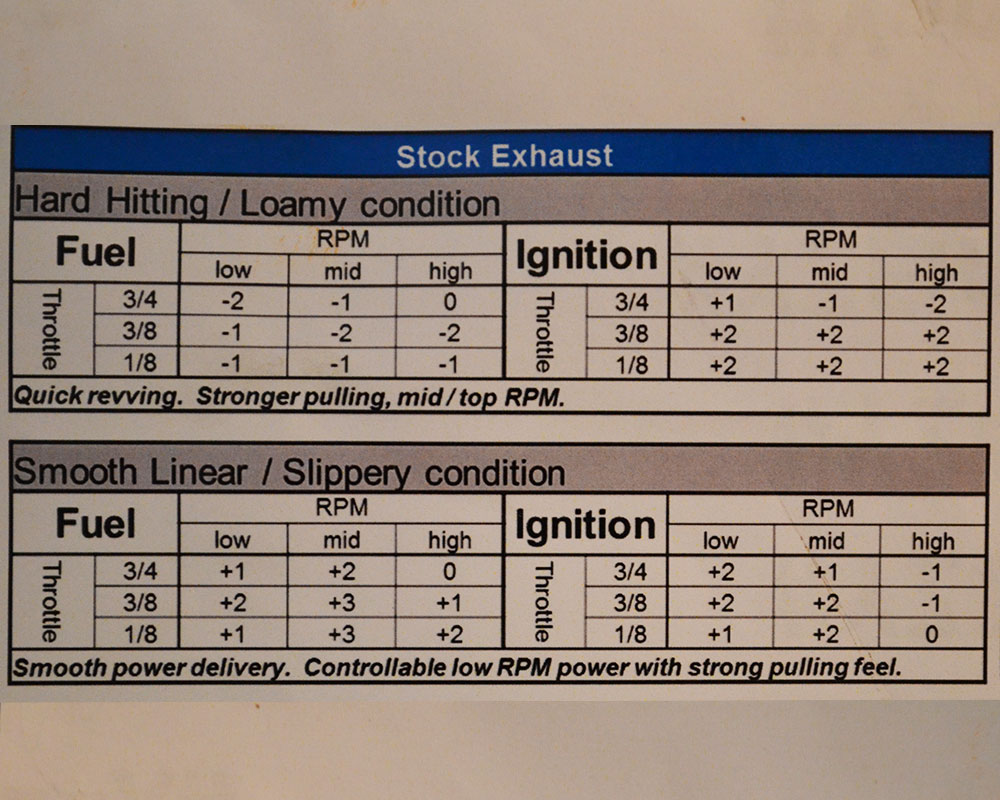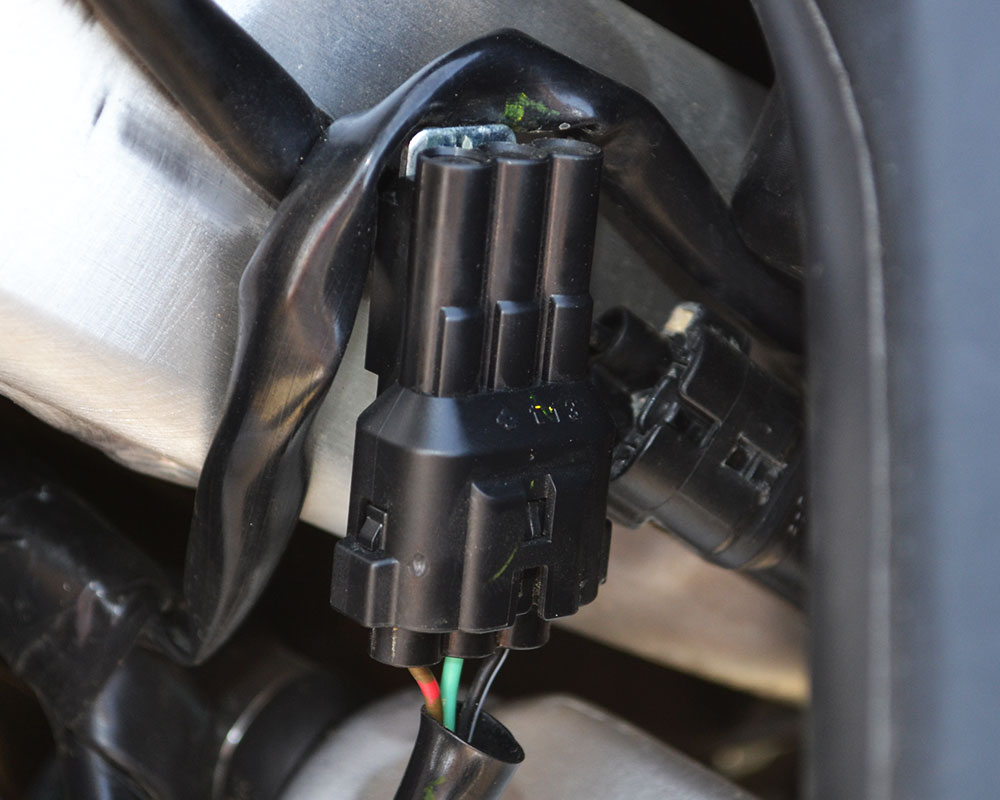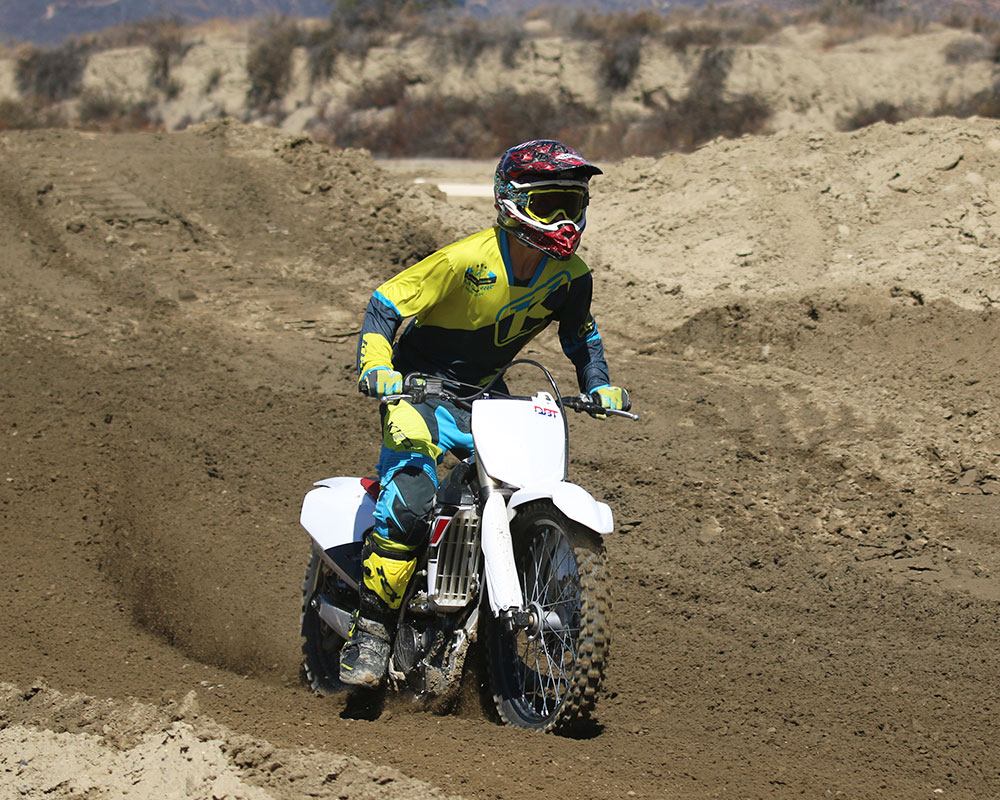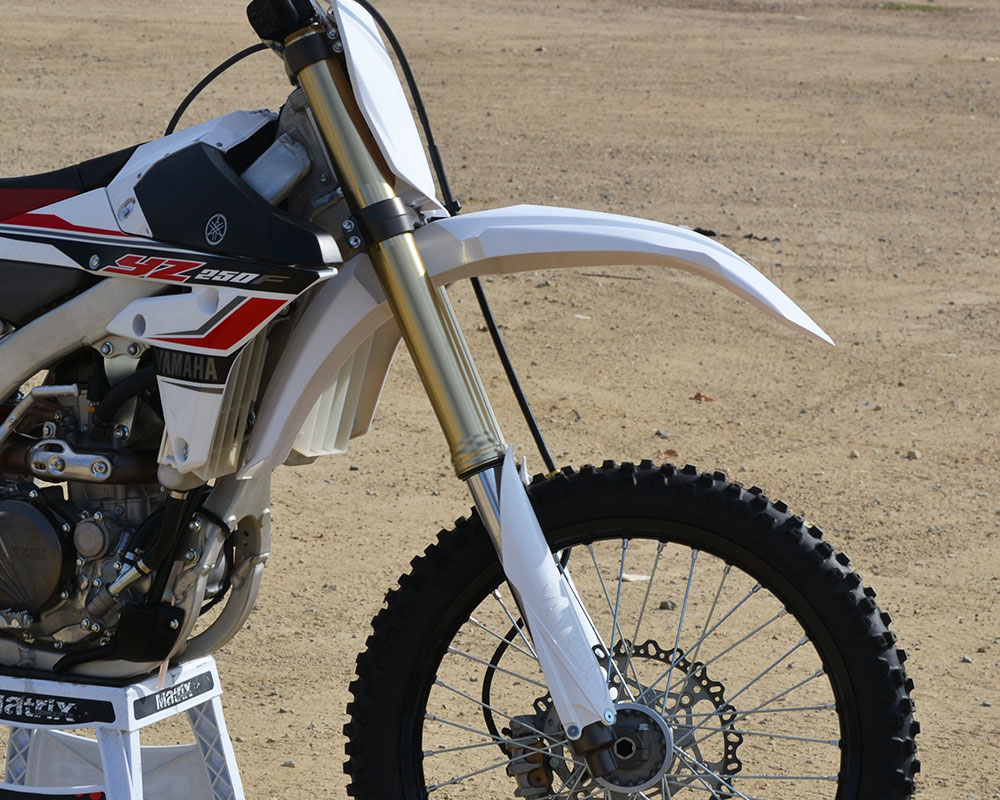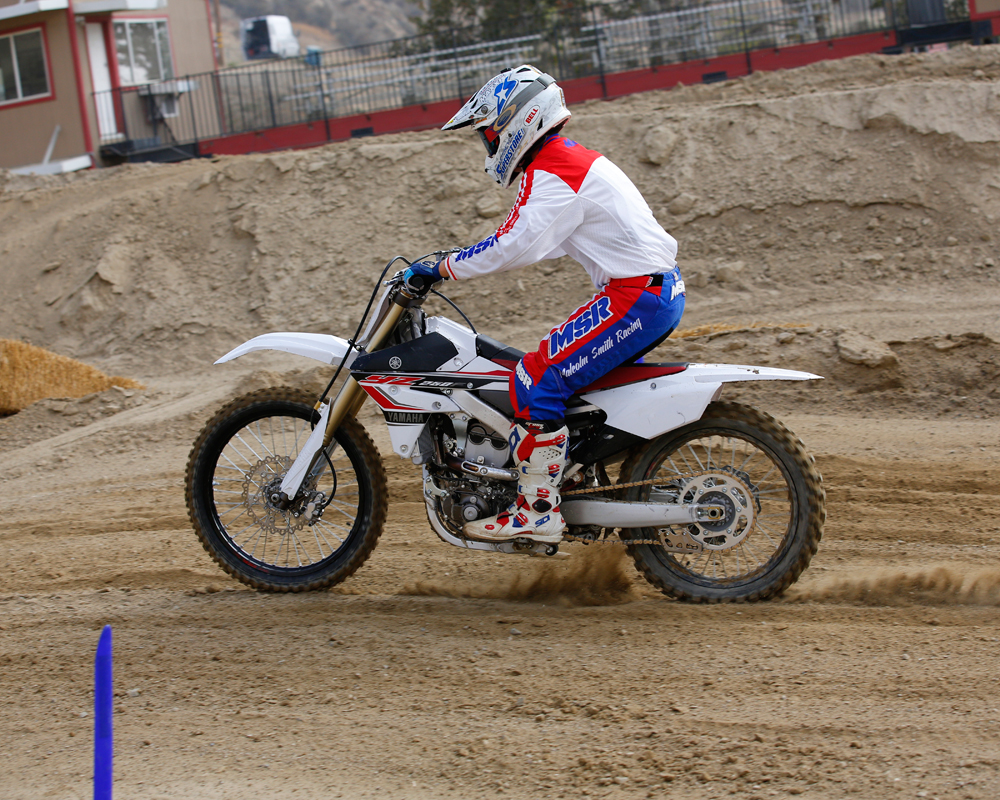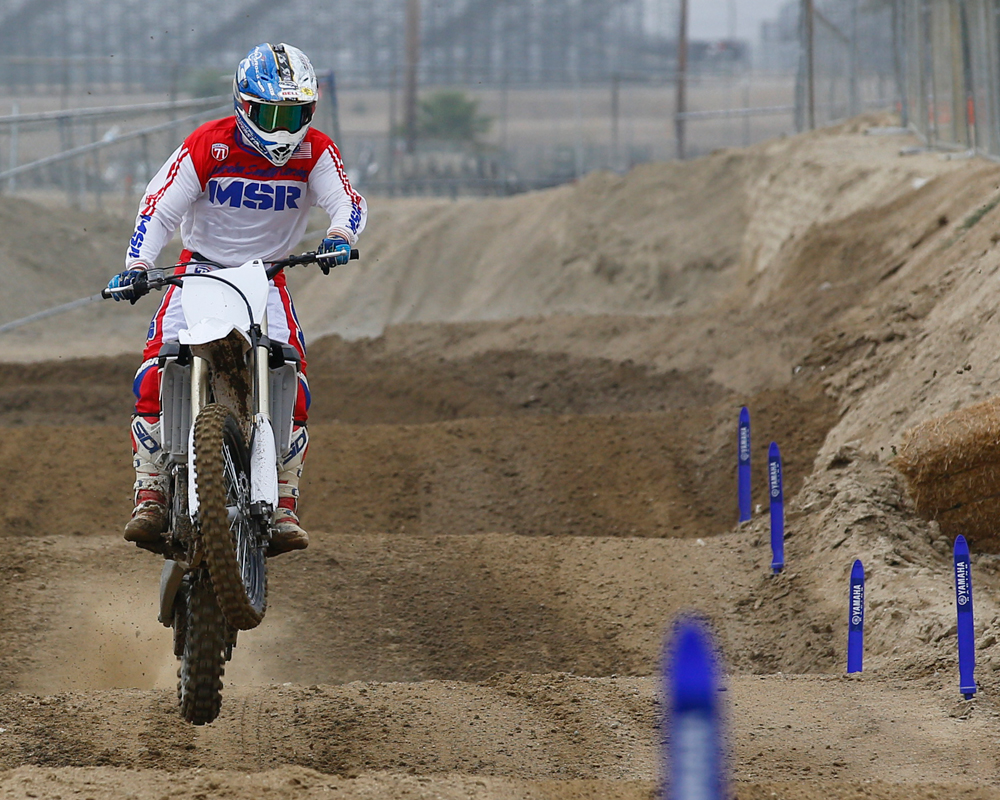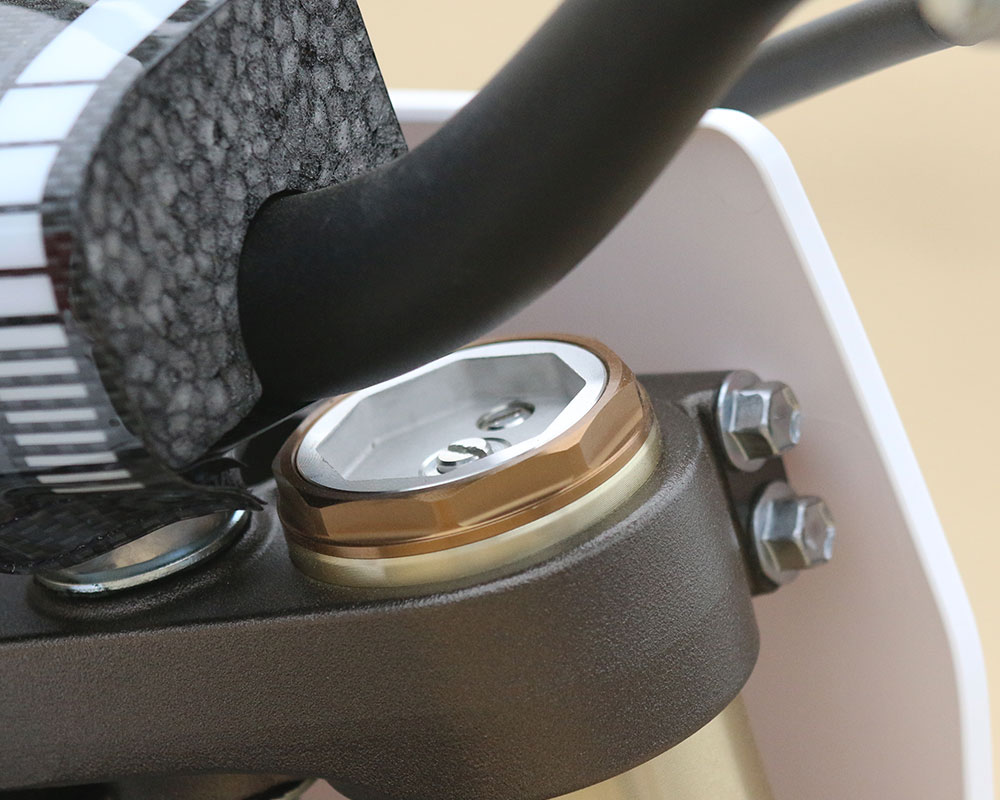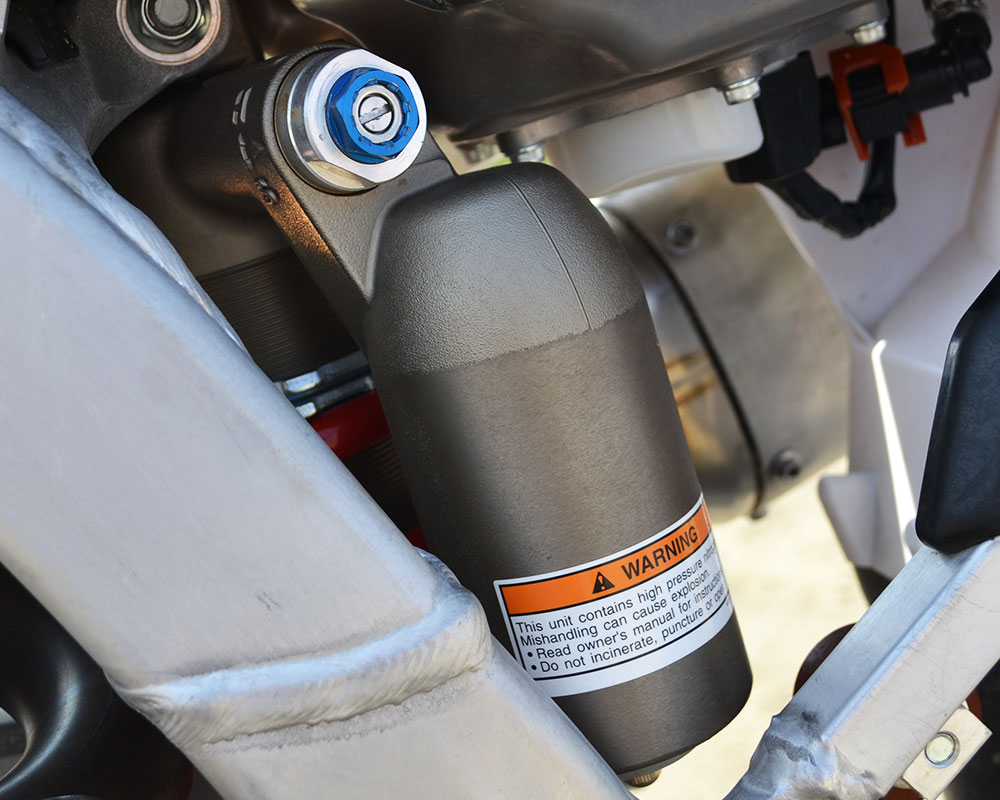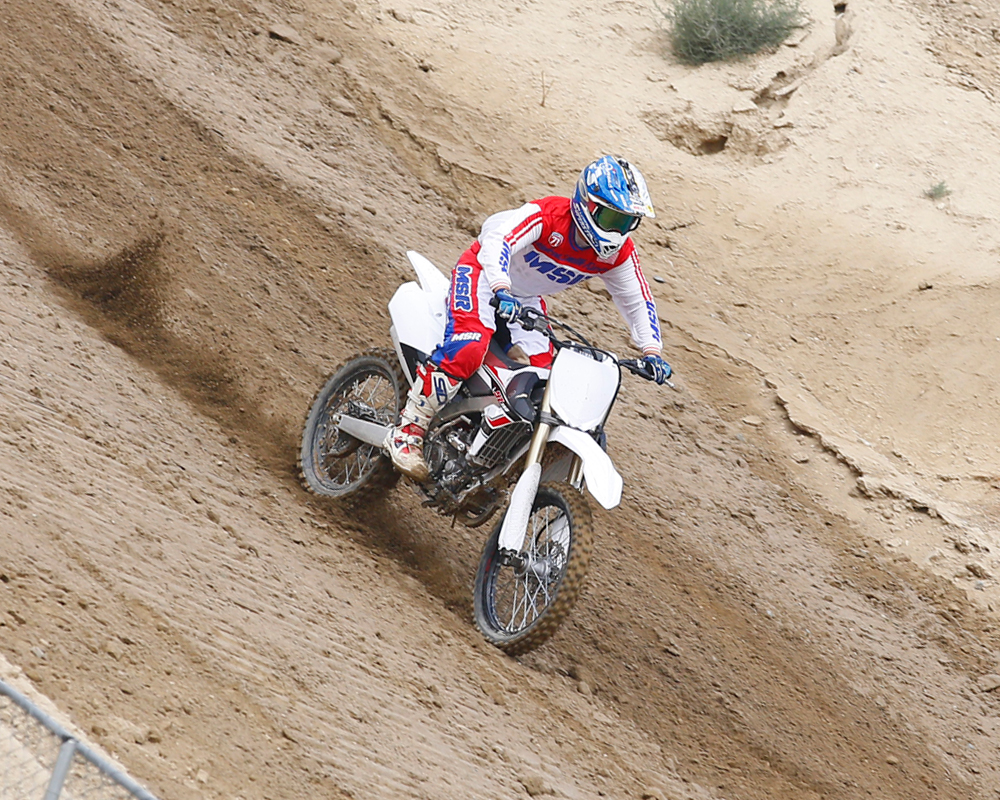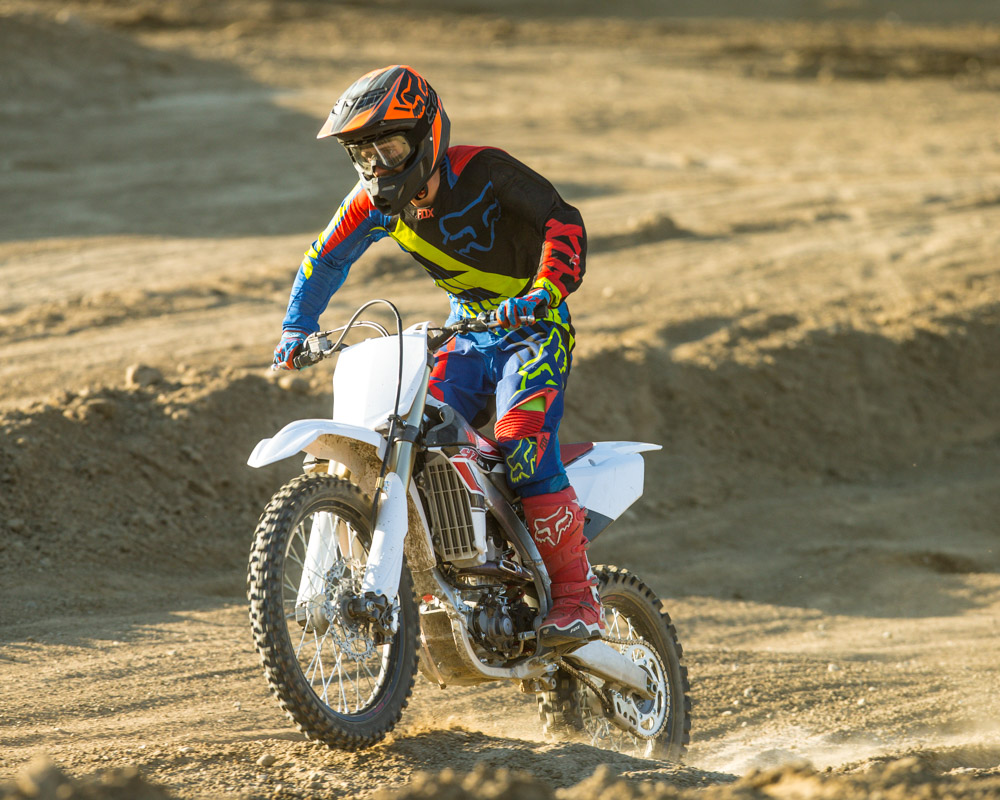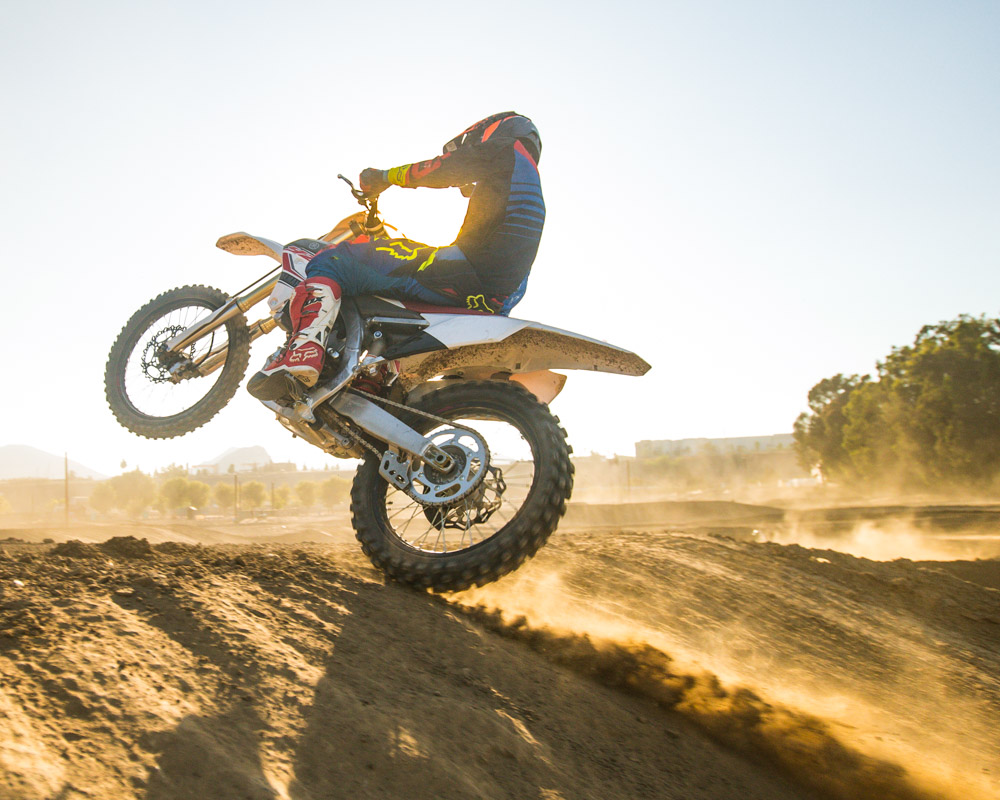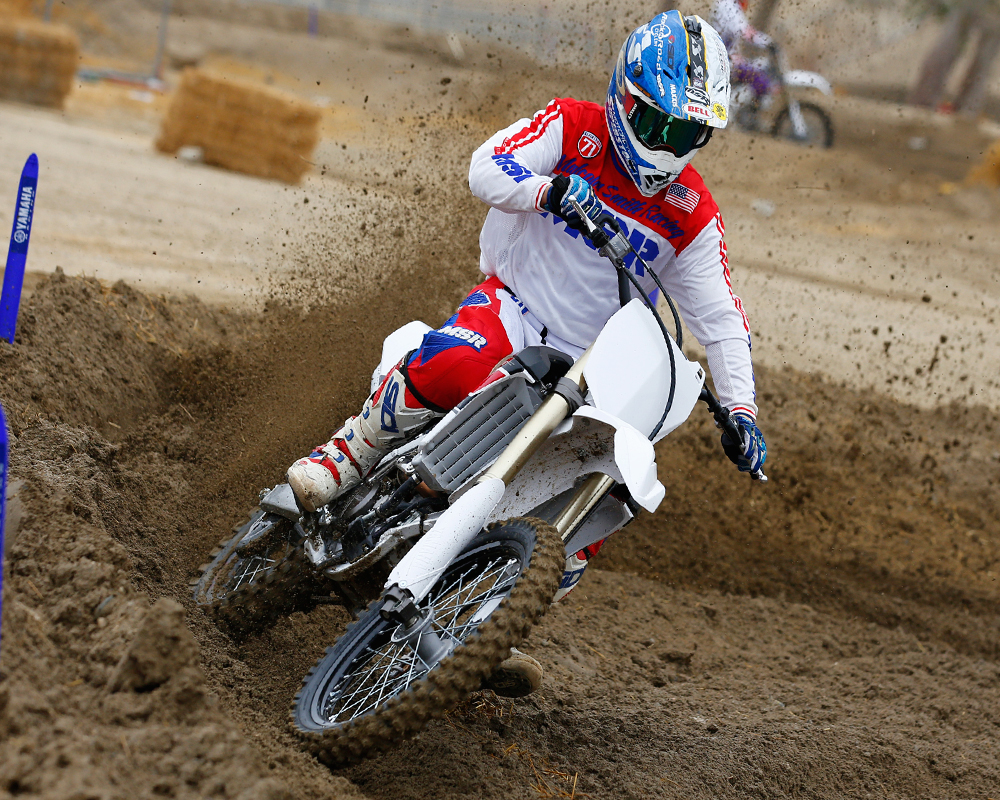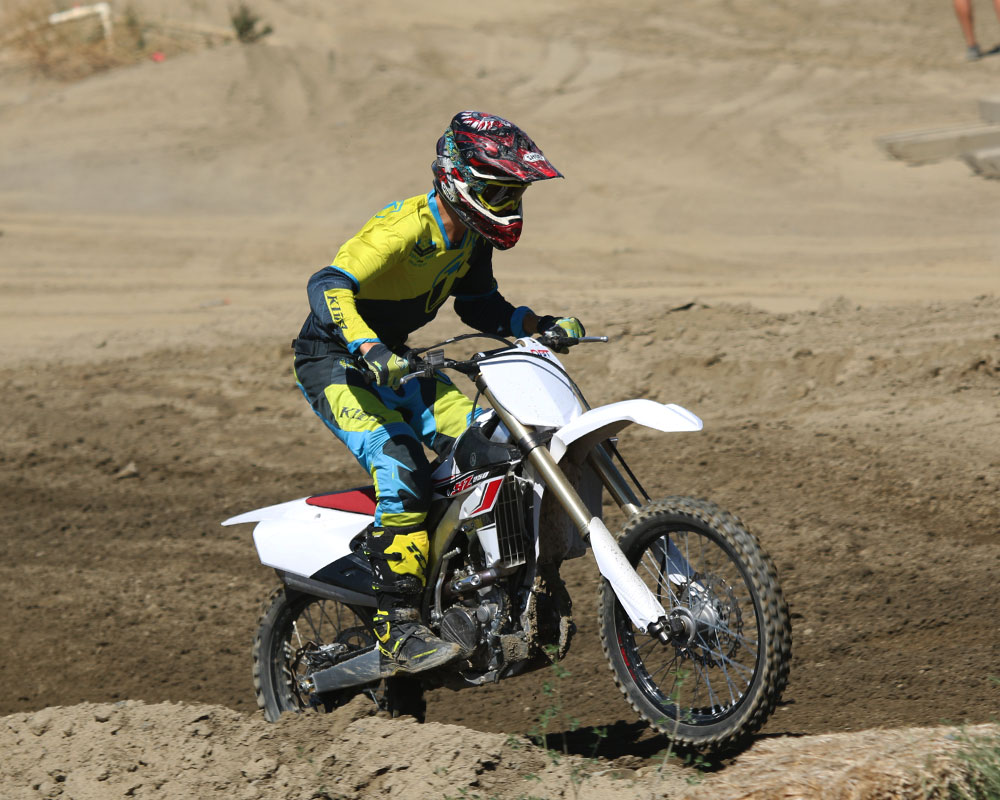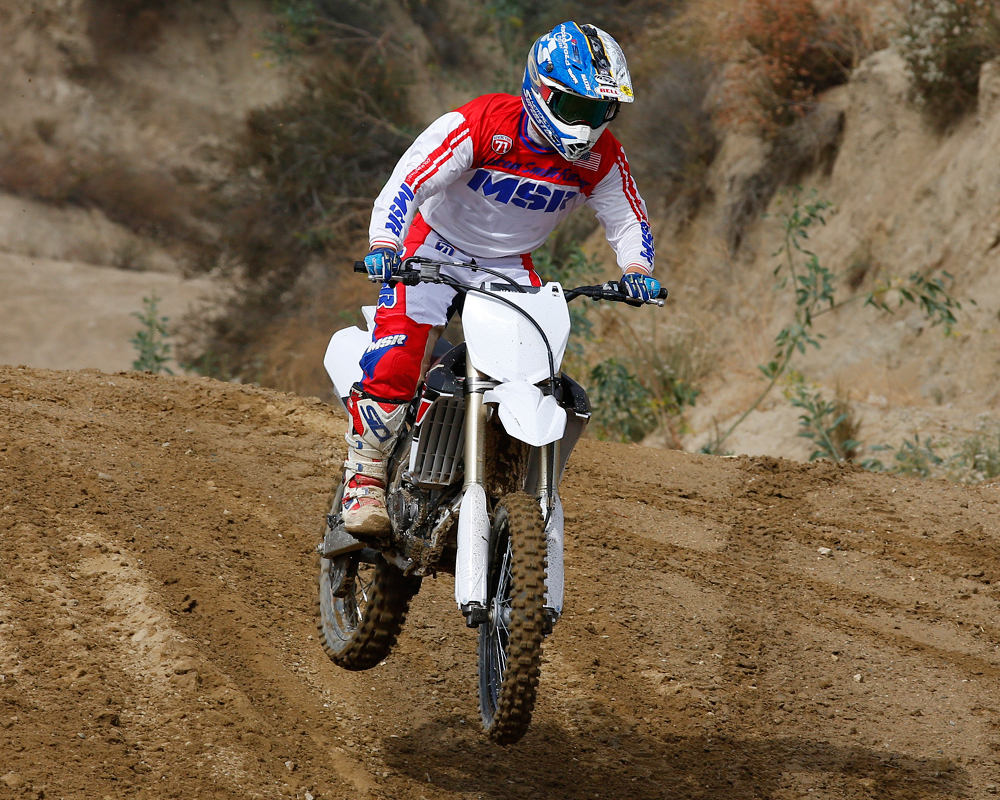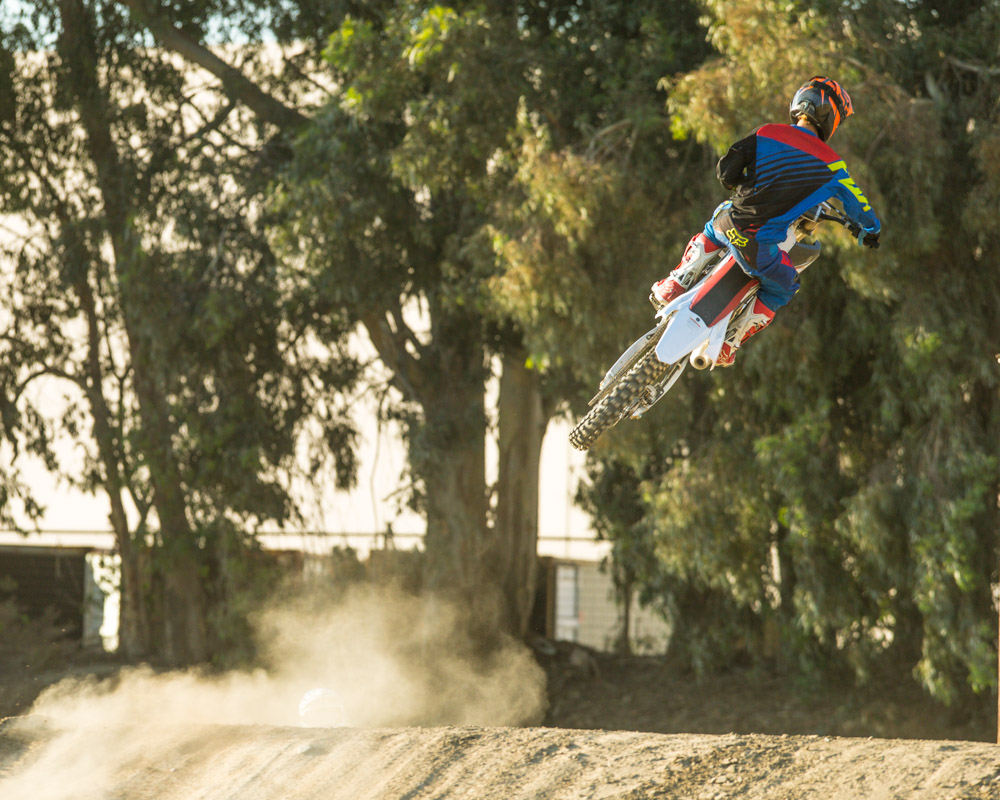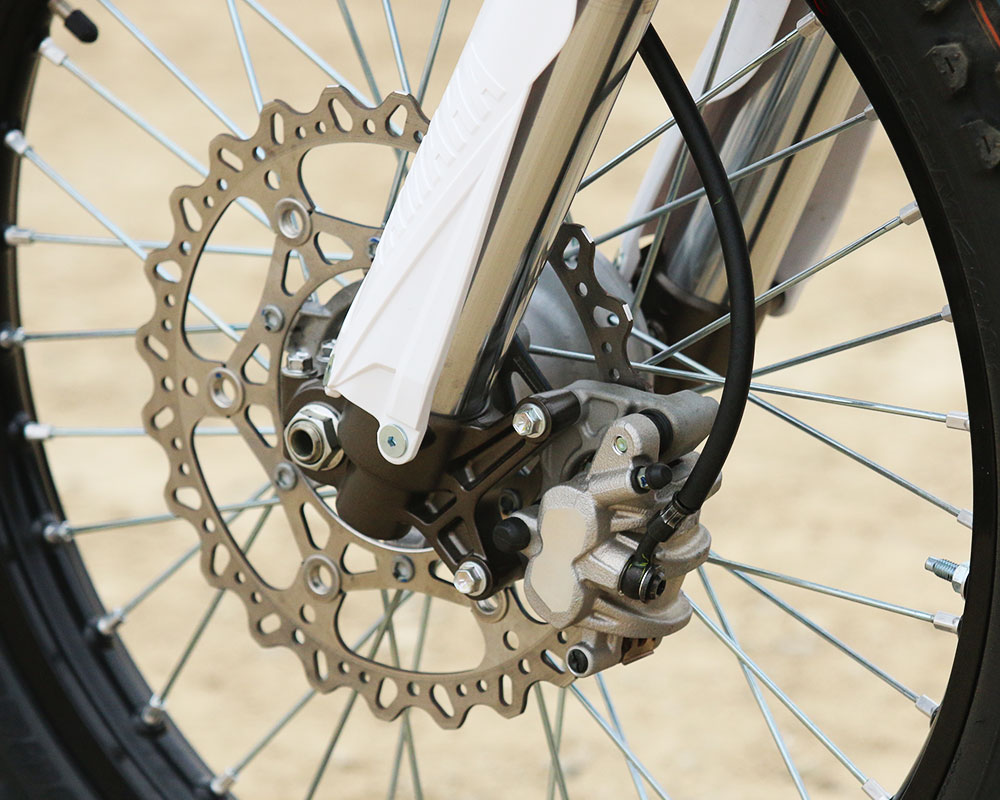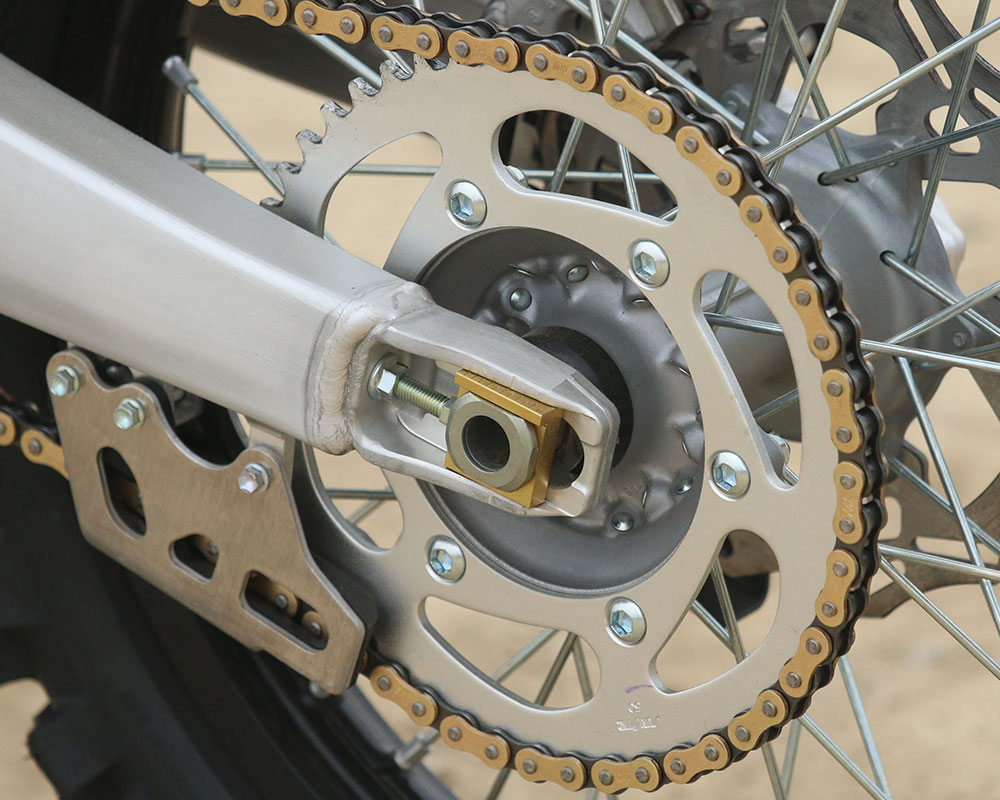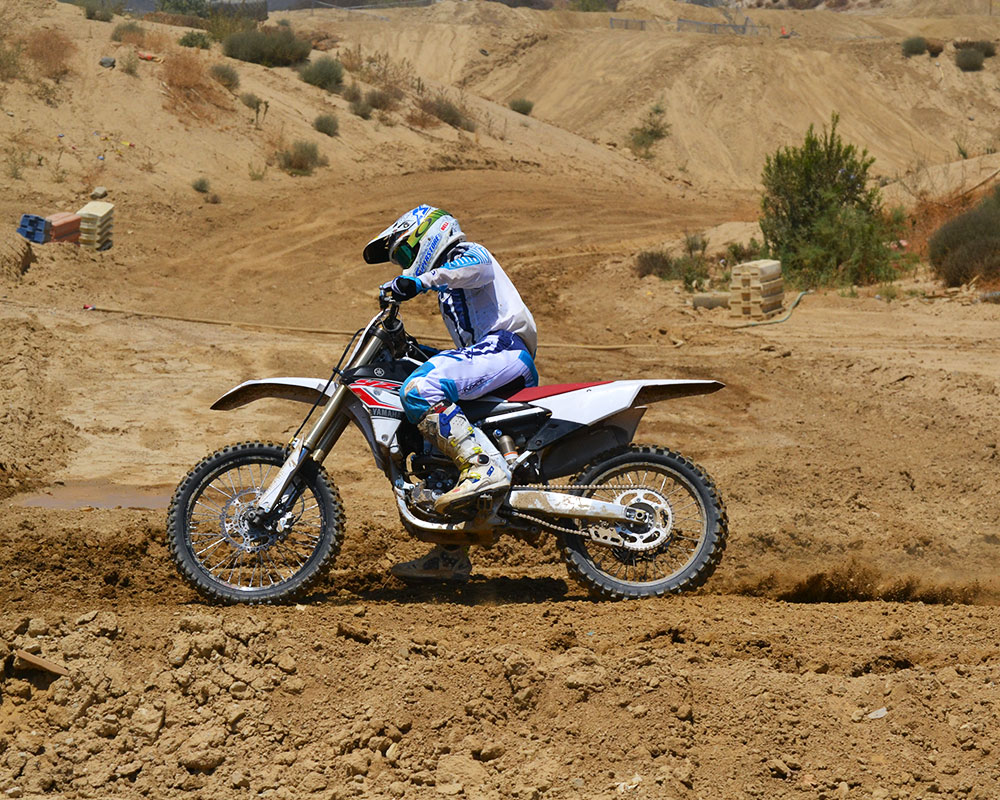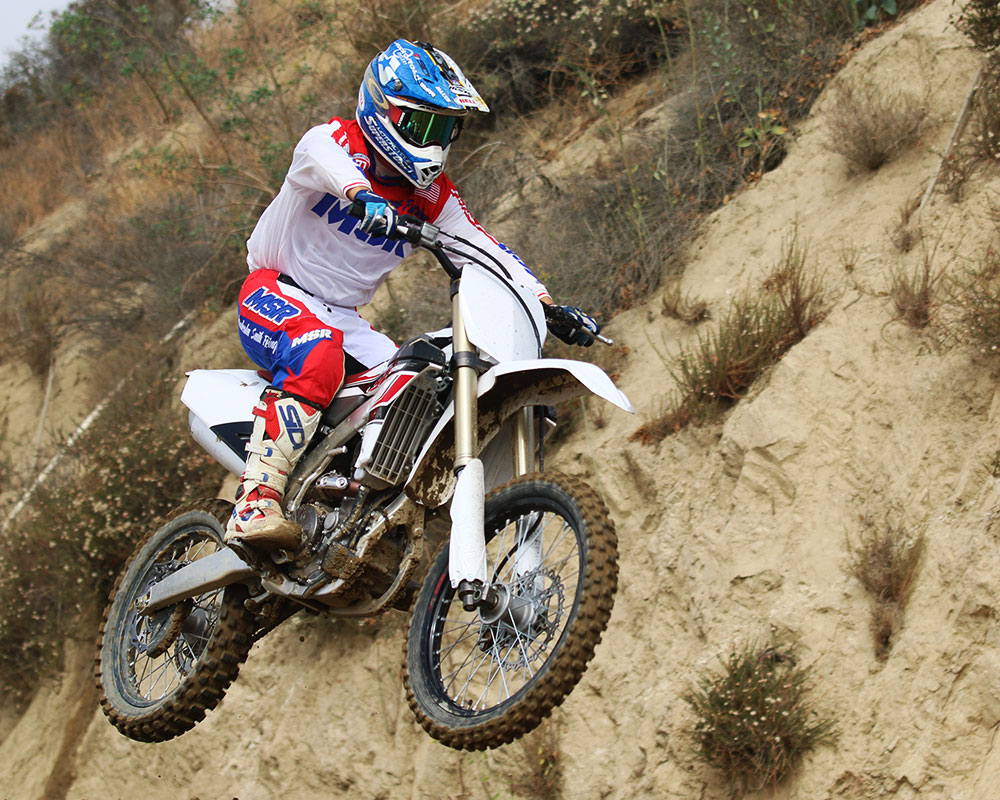2017 Yamaha YZ250F
Can It Get Any Better?
MSRP: $7,699
- Phenomenal motor package.
- Balanced and stable chassis.
- Fun and easy bike to ride that's also capable of being a full race bike.
- Missing the electric start.
Introduction
- Yamaha continues to refine their popular midsize bike.
- Improved power and handling.
Since Yamaha did a complete overhaul on the YZ250F in 2014, this bike has nearly taken over the 250 class winning four out of the last six championships with Cooper Webb and Jeremy Martin. It has even been cleaning up in shootouts/comparisons and DirtBikeTest would also say it has been our favorite 250F motocrosser. The rearward slanted engine and reversed cylinder head design has proven to be a very powerful package. Yamaha focused on increasing its performance and durability for 2017 with a host of changes.
The 2017 four-stroke YZs are available in both the familiar Blue color and the red/black/white of our test bike.
Changes
- Several changes made to improve mid-to-top power.
- Improvements to the transmission and clutch provide smoother shifting.
- New frame and suspension settings for better handling.
For 2017, Yamaha focused much of their changes towards improving the already incredibly fast engine. Many of the changes like a larger midpipe are geared towards improving the mid-to-top performance. In addition to updating the throttle body joint to aluminum to transfer heat from the cylinder, they also gave the engine cases a heat treatment and utilize a stronger connecting rod to increase durability. The cylinder head port was raised 4mm providing a straighter intake while a 15mm shorter air funnel inside the airbox increase the airflow by a claimed 4.6% but in reality they are just changing the velocities and airflow patterns across the intake tract. A 0.4mm increase in diameter in the valve seats were accompanied by higher lift camshafts. This gives the increased flow simulating a larger valve. They also came up with a new ECU calibration to make it all work together.
Not only did Yamaha alter the power output, but also the shifting performance and a smoother clutch. They added a bushing on the shift arm inside of the engine case as well as grooves in the shift cam to add oil supply for less friction. Additionally, the clutch actuator arm length is now 3mm shorter and consequently the cable’s angle was changed for a more direct and smoother pull. Lastly for the transmission, 1st, 2nd, 3rd, and 5th gears were widened and the shifter position was lowered 5mm to match the frame changes.
The footpegs are now 5mm lower due to the new frame consisting of steel engine mounts and a 12mm expansion to the forging above the footpeg and housing the swingarm pivot. It is the exact same frame as its big brother, the YZ450F. They also chose to stick with their famed Kayaba SSS spring forks rather than heading to air like most competitors have. The fork spring rates are down from 4.7 N/m to 4.6 N/m and reside in more rigid outer fork tubes with updated suspension settings. Recessed dzus fasteners for the air box cover keep rider’s legs from catching and new rear brake disc material are introduced. Lastly, some bold new graphics complete the changes for 2017.
Power
- Incredible power throughout the entire range.
- GYTR Power Tuner changes the power characteristics greatly.
- Motor compliments the chassis.
- Effortless clutch pull.
The motor on the 2017 YZ250F is incredible. It has a good bottom end where the hit isn’t too abrupt by ripping your hands off the bars but it still has plenty of power and torque to keep up with any other bike in its class. The power complements the YZ’s handling in corners since it pulls smoothly while maintaining its line and not contributing to the bike jumping out of ruts. As you continue to climb in the RPM’s, the motor keeps producing more and more power until it hits the almighty rev limiter. The pull into the top never really drops off. Rather than falling flat or nosing over it just does work up there. All the power made off the bottom and through the mid-range confused some less experienced four-stroke riders as they felt the engine was not as good on top as it really is. With the change to the rev limiter this year, anyone familiar with the previous YZ250Fs and its unique rev-limiter will definitely notice a change. It now acts like all the other 250F’s as it doesn’t slowly cut off the spark-- it does it all at once. The tone of the exhaust sounds different up in high RPMs as well, especially to people off the track. Additionally, our testers felt that riding at the rev limiter wasn’t as beneficial as shifting a little earlier and preferred to keep the RPM’s a tad lower. Even when riding in a high gear the bike still pulls and torques pretty well which vet and or novice riders might prefer.
Even though we tested changes to the mapping with the GYTR power tuner, everyone agreed the stock map was excellent. It wasn’t too aggressive or too mellow on any track and it proved to be an all around solid setting. However, when making it a little more aggressive with the optional GYTR Power Tuner, expert-level and younger riders prefered this map in soft or more loamy conditions. It gave the bike a little harder hit while it also revved quicker than the stock map making the bike feel faster and for some, this also made it much easier to clear big jumps out of a turn in the right conditions. The more seasoned riders still preferred the stock map due to its smoother feel. When riding on a slick, hard pack track, the mellow maps didn’t feel a whole lot different than stock other than it took a little longer to get going.
With the refinements to the transmission, we felt the shifting was improved over last year. It shifted smoothly and effortlessly although the clutch pull is very light and makes you want to use it more often than normal. It is now so easy to pull and use the clutch, riders were often going a gear high through turns a little more often. Ours hasn’t started to fade after all the extra abuse it has been getting. But none of our testers are truly hard on the clutch.
The bike for the most part starts easily. But when you stall or tip over on the track, we found it a little difficult to start in gear. Another YZF trait is the noise coming out of the air box which is in your face to put it simply. Once used to it, this is normal but first time YZ riders took notice.
Suspension
- Stable in all conditions.
- Spring forks are simpler than air.
- Small clicker changes were adequate for various track conditions.
Rather than switching to air forks like most other competitors have done, Yamaha has stuck with the tried-and-true KYB SSS spring forks. Other than the simplicity of using spring forks (not having to check pressure), many feel they work better than an air sprung fork. With the change to more rigid outer fork tubes (actually stiffer than the 17 YZ450F) but softer springs, it felt stable at all times. Coming into corners, the front end didn’t want to dive but instead stayed up in the stroke. Also, we didn’t experience any head shake at higher speeds.
One change we made on harder pack tracks was softening the fork 2 clicks to remove the harshness felt in braking bumps. When coming into a tight corner at slow speeds, the forks provided a rigid feeling and the changes give a plusher ride. It eliminated the harsh jolt from the braking bumps. Even after softening the forks, it still performed well on hard landings and in faster braking bumps and didn’t bottom out for riders in the target weight range. Heavier riders were fine with stock and faster riders, like always, wanted them a little stiffer.
When riding a track like Glen Helen with high speeds and steep downhills, stiffening the fork 2 clicks helped keep the front end up and ride higher in the stroke when descending the steep hills for a better balance. Small fork changes really gave the shock a better feeling too. If the rear were dancing around a little bit, the fork change had it working properly--staying planted through the braking bumps. This shows the bike is sensitive to balance and ride height. We were usually at 102-105mm for the sag. Additionally, when the suspension bottoms out, it doesn’t offer a harsh feeling like you might expect, instead, a forgiving feeling was received.
Some of our testers felt the rear end would kick up over jumps. Slowing down the rebound 4 clicks on the shock eliminated the kick without packing. Also as a result of this change, the bike stayed planted better in acceleration bumps on turn exits. The suspension adjustability proved to be easy for most to figure out and the front fork is just plain simple compared to the use of air. For every track condition there was an easy clicker solution.
Chassis - Handling
- Balanced feel.
- Very lightweight feeling.
- Looks are deceiving.
- Motor and chassis work well together.
The YZ250F feels very balanced between the fork and the shock. They work well together and has a neutral feeling at all times. It’s capable of racing across straightaways while also turning well which is rare. Although the YZs appear wide and heavy at first glance due to the airbox being in front, it doesn’t translate to what is felt while riding. The bike feels much lighter than its appearance. On the scale, the YZ is 234 pounds with fuel which is actually heavy. Sometimes the scale weight and the feel are very different.
With the help of the motor, the YZ likes to stay planted and tracking in ruts and doesn’t try to jump out when getting on the gas. It’s also very good at both railing ruts or hitting an outside berm. On choppy straightaways, the bike stays straight and fails to do anything unusual which as a result boosts your confidence. Over jumps it is very light and maneuverable and gives you a feeling of safety. With one of our testers being accustomed to a 125, the weight difference when moving up to the 250F became very apparent. It felt much heavier than the 125 and took a few laps to readjust to the power and weight difference between the bikes. But he was jumping it just fine in only a few laps.
One of the strong features of the YZ is how it changes direction even if you are only using part of a line. A rider can be very creative with line selection or making a new one all together. The YZ finds traction to apex a turn without totally upsetting the chassis or breaking traction. This can be helpful when the main line gets rough or the berm gets blown out and highlights the connection between the power and the handling. Where does all this goodness come from? We suspect the frame and engine mounting changes along with some of the counterbalancer changes that were made inside the engine last year really go farther than the spec sheet can describe. Where a rider will really feel the difference in handling would be in jumping from a 2015 YZ250F to the 2017 bike.
The brakes work well with the addition of the 270mm front rotor from last year. This was a nice improvement over 2015 but they are still not the best we have felt. With the newly recessed dzus fasteners at the air box, we didn’t have any problems with our boots or pants catching them at the air box/gas tank. The seating and bar position was liked by everyone and never seemed to put riders in an awkward riding position. A nice feature for bigger riders is the ability to re-position the bars further forward in the clamp to open up the rider cockpit.
Yamaha’s durability has never been a question and this bike is no different. We have gotten over 100 hours on an FX model with the same engine platform. This bike should hold up well without any problems especially considering Yamaha looked at the connecting rod carefully. That was the only area of concern in the past for hard riders so time between internal engine service intervals should be increased.
Conclusion
- The YZ250F continues to improve.
- Appealing to riders of all speeds and sizes.
- Powerful motor and simple yet effective suspension components.
Overall, the 2017 YZ250F is a superb motorcycle and improved over the 2016. The motor is incredible with the amount of power it produces and how it has an amazing delivery from the bottom into a sick mid and then revs to the moon. The engine seems to work and gel very well with riders at skill levels from novice up to fast pros, oh ya, and vets too. The suspension, even though the SSS fork first came out a decade ago, is still regarded as one of the best in the business. We were easily able to tune the suspension for a variety of tracks and skill levels with a simple screwdriver. This is a full race bike but also very fun to ride and seems to appeal to a very wide group of riders, even tried and true 450 fans were pretty surprised how light feeling yet powerful the bike was. On the engine side, the GYTR tuner is like having a box full of different exhausts right at your fingertips. Fun and exciting are two words to describe the 2017 Yamaha 250F. Trying to knock it off the top step is going to be hard work for any manufacturer.
Recent Product Tests
What Others Said

http://www.dirtbikerider.com/news/video-s7/Testing-the-2017-Yamaha-YZ250F-i13824

http://www.dirtrider.com/video-2017-yamaha-yz250f-review-first-ride
Leave a Reply
